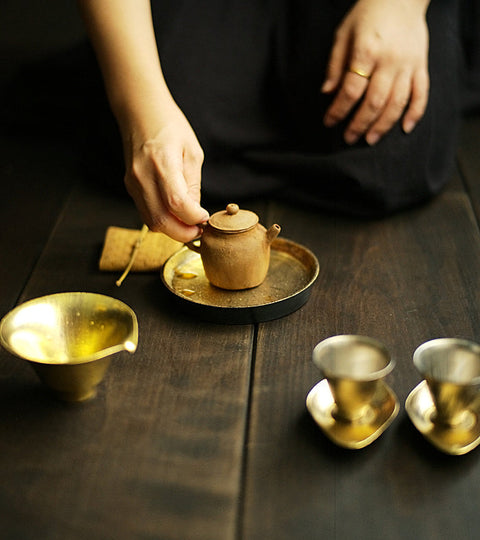You know that moment when you brew the most incredible cup of tea, then spend the next week trying to recreate it? Same leaves, same water, but somehow it's just not quite right. I see this all the time—the secret is usually in the tea amount. Too little and you're missing all the beautiful complexity; too much and even the finest tea turns harsh.
Over the years, I've found two gentle formulas that really help. They're not strict rules (tea is far too interesting for that!), but they give you a lovely foundation to build from.
The Backward Formula: Start with Your Cup
I love starting this way because it's so intuitive. Instead of guessing, think about how much tea feels right for the moment. Different teas naturally want different serving sizes:
- Phoenix Dan Cong: 20-30ml per person (it's that concentrated)
- Green, yellow, red teas, and Tieguanyin: 30-50ml per person
- White and dark teas: 50-70ml per person (they invite longer sipping)
Multiply by however many people are joining you, and there's your vessel size. When I have friends over for Dan Cong, I reach for my 60-90ml gaiwan. It's perfect for three of us to really appreciate those incredible floral notes.
The Ratio Formula: Tea to Water
Once you know your vessel size, the tea amount follows standard ratios:
- Delicate teas (green, yellow): 1:25-1:30 ratio
- Most oolongs and blacks: 1:12-1:15 ratio
- White and raw pu-erh: 1:20 ratio
- Liu Bao and other dark teas: 1:15 ratio
So that 90ml gaiwan for Dan Cong? You'd use about 6-7 grams of tea.
Reading Your Results
Here's how to know if you've hit the sweet spot:
Taste harmony: Everything should feel balanced and inviting. If you find yourself making faces at the bitterness, try a bit less tea or shorter steeps next time.
Leaf happiness: Well-measured leaves expand beautifully and stay structured through many infusions. When leaves get mushy or expand unevenly, they're telling you something needs adjusting.
Brewing longevity: Good dosage gives you flavor evolution across 6-8 steeps, not a cliff drop after the second.
When You Don't Have a Scale
When I'm traveling or visiting friends, I don't always have my scale handy. Here's what I look for:
- Green teas: Fill about 1/4 of your vessel
- Red teas: About 1/3 (they're more compact when dry)
- Tieguanyin: Just cover the bottom—it expands dramatically
- Dan Cong: 1/3 of the vessel
- Rock teas: 70-80% full (those big, mature leaves need room but high concentration)
These visual guides aren't as precise as my little scale at home, but they'll definitely get you to delicious tea.
Making It Your Own
You know, I think of these formulas like learning to ride a bicycle—helpful at first, but eventually you just know. Most of my tea friends started exactly this way, measuring and calculating until it became second nature.
Everyone's taste is different, and that's the beautiful thing about tea. Some of you love a robust, wake-you-up kind of brew, others prefer something more gentle and contemplative. Some teas absolutely shine with a higher ratio, while others become too intense. Start with these guidelines to find your rhythm, then trust your palate to guide you.
The goal isn't to follow rules perfectly—it's to make tea that brings you joy, the kind that makes you pause and think, "Oh, this is lovely."
After all, the best tea amount is the one that makes you smile and reach for another cup.
Quick Reference
Serving amounts per person:
- Phoenix Dan Cong: 20-30ml
- Green, yellow, red, rock tea, Tieguanyin: 30-50ml
- White, dark teas: 50-70ml
Tea-to-water ratios:
- Green, yellow: 1:25-30
- Most oolongs, blacks: 1:12-15
- White, raw pu-erh: 1:20
- Dark teas: 1:15
Vessel capacity = serving amount × number of people

